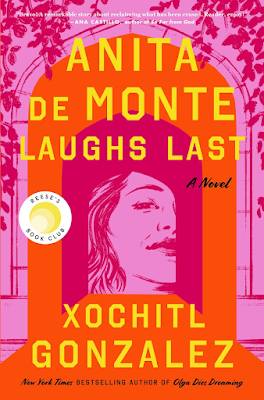Unexpectedly, I landed a job at a major university, here in L.A., as a program
administrator. Later, as I got to know the people who hired me, they said
they knew I lacked the experience for the job, but I had more maturity and
seemed more responsible than other applicants they’d interviewed, some graduates of prestigious universities and multiple letters after their names.
Two years
later, I was still getting my bearings, but I wanted to get out of L.A., so I
moved up north, to east Sacramento, and was, again, lucky to land a job, this time at a community college, a few miles outside of the city limits, out towards the Sierras, doing
the same job, more or less, writing reports, designing programs, and dealing with deans,
professors, vice-presidents, and other program administrators, a gaggle of P
h. D’s and M.A.’s. among them, and, of course, still bright-eyed and bushy -tailed about working in higher education.
I’ve got to admit my surprise, and in some cases downright disappointment, when I learned so many hotshot, educated people in higher education were incompetent, opportunistic, manipulative, or just plain slothful, at all levels of the academic hierarchy, from professor to president, no "common sense," as American political philosopher Thomas Paine might say, and in some ways, no different than some of the folk I worked with mopping floors and cutting lawns.
My friends in the corporate world don't deny the same thing doesn't exist in their shiny towers, as Lee Iacocca found out when he took the helm at a dysfunctional Chrysler in 1978, and workers at Boeing have known all along, come on, losing doors and tires after takeoff. That’s not to say, I didn’t also meet brilliance
and ingenuity, sometimes in the most unlikely people, often researchers tucked away in isolated labs across campus.
After a few months, my boss’s
boss, a blue-collar boy who “made it good,” gave me props for serving in the
military and going to Vietnam, "You know," he said, "colleges are structured like the military. We're at war against ignorance," so he offered me a promotion from program
administrator to director, bypassing others who felt slighted, which is another
story. At least it got me out of the basement and onto the first floor--with a window, a big deal in any college or university campus.
As a director
of a unit called Developmental Programs, I was required to sit in on the assistant
vice-president’s weekly briefings, held on the fifth floor, the president’s
floor, in a typical room you’d expect to find in a traditional college, massive double wood doors, the walls covered in dark mahogany siding, and long, wide meeting table, and heavy,
elegant oak chairs to accommodate the presence of each person's perceived brain power, not unlike the true definition of the Latin, "Mensa."
Sitting
around the table were deans, directors, and the assistant to the assistant vice-president, Bernard Slyder (Ed. D not Ph. D., a keen difference on a college campus) who welcomed us, gave us a bit of a pep talk, and turned the meeting
over to his assistant. Dr. Slyder, a big man with an ample, but not fat, midsection, sat back
in his plush chair, crossed his arms, and commenced to shut his eyes, just like
that, which, in my naivete, I figured helped him focus better.
Every once in a while, he’d smile and nod, briefly open his eyes, as if our reports met his satisfaction, then, again, nestle into his chair, and shut his eyes. He sure sounded like he was asleep, a slow steady breathing escaping between his lips. When the meeting finished, his eyes shot open, as if on a timer. He thanked us and said he’d see us next week.
After the
meeting, I asked my friends about it, telling them my suspicions. They laughed
and, in a not so scholarly jargon, said, “Yeah, he was sleeping, man. The dude's a righteous narcoleptic, sleeps through staff meeting.
It’s his prerogative.”
My friend Marty Montoya, in the office of “outreach
services,” said, “The vato does whatever he wants, ay,” and said another, “Yeah,
welcome to higher education.”
The stories about Bernard Slyder were endless. A community college president, back in the 1960s, offered Slyder a dean’s job because Slyder had once been on the city council where the college was located. Slyder’s family had owned a popular electrical business in town. In the 1930’s, they’d come to California from Oklahoma during the dust bowl period, and after spending time working in the fields, got into the electrical business and struck it rich when they got some lucrative contracts, hired more electricians, and built their own company.
Slyder got a bachelor's and a master's from a state university and pretty much mail-ordered his Ed. D. His slick social skills made him influential friends and kept laborious work tools and colored
wires out of his uncoordinated hands. My understanding is that he talked his way into the
Friday night poker games, where big time farmers and choice businessmen gambled with college and university
bigwigs, and other town notables. It wasn’t long before they talked Slyder into local
politics.
Once on the city council, Slyder built up a robust rolodex filled with the names of prominent state politicians, mostly
Democrats, but some moderate Republicans, and since they worked a few miles up the
freeway at the state capital, they were always accessible. It was
a mutual arrangement. Slyder promised to deliver them votes, and they promised to pass bills benefiting his interests, whether business or education. Some old-timers say,
Slyder even hosted the Kennedy brothers at his Victorian home at the edge of town,
so it wasn’t long before other presidents promoted Slyder, utilizing his
rolodex and figuring he couldn’t do much damage as an assistant vice-president of students and community relations.
Then came one
night in the late 1970s, a few years before I arrived. As the story goes, Slyder
checked out a college vehicle and returned it to the motor pool banged up,
but not like he’d had an accident, more like he’d parked outside a baseball
stadium and the foul balls had their way with the vehicle.
Rudy Moreno
was there to collect the keys when Dr. Slyder returned the vehicle to the motor pool. Rudy said
Slyder handed him the keys, told him to have a good night, got into his own
car, and drove away. No one knows how the story leaked, but when it did, the
whole campus was talking.
Now, this
story came to me secondhand, and like any secondhand telling, it means somebody
told somebody else, reliable? who knows for sure, but it became campus lore,
and from what I understand, is still making the rounds, nearly thirty-five
years later.
The way I heard it was Dr. Slyder checked out a campus vehicle to attend a regularly scheduled Wednesday night
meeting in town. It was a large agricultural campus, spread out over hundreds
of acres, some cultivated for research and others virgin land, nicely wooded
nooks, good places to disappear for a few hours, which is what Dr. Slyder was
doing.
Each
Wednesday, at the appointed time, another car would pull up beside his, his
secretary, Marsha Montgomery, and she wasn’t there to take dictation or answer phones Some say
this had been going on for some time, months. Now, Dr. Slyder was no spring
chicken, as they say, but still spritely, according to some, and quite the
ladies’ man, but on this particular night, they were both in for a surprise.
No one admitted
to finally squealing to Marsha’s husband, but, somehow, he got wind of the affair
and took up his place behind a tree to confirm the rumors true. At the time of
his choosing, Al Montgomery, a mechanic in a part of Sacramento known as Norte
del Rio, a biker’s enclave at the northern-most edge of the city, came out from
behind a tree, a baseball bat over his shoulder, ready to pounce.
When Al peeked into the windows and confirmed the identity of the occupants inside the campus car, the mechanic from Norte del Rio lifted the Louisville slugger high over his head, brought it down, and began wailing on the hapless campus car, battering it in every spot imaginable, even grotesquely disfiguring the college name and logo on the driver’s door. It's not exactly clear what happened from that point on, except for Rudy Moreno, and the guys in the motor pool, who gave their rendering of Dr. Slyder, cool as a cucumber, returning the battered vehicle to its home among the other vehicles.
Rudy had no choice but to report the incident to his boss, with no explanation, since he had no idea what had happened. Rudy's boss reported it the appropriate authorities on campus, and the story hopped from lip to lip, ear to ear, from the lowest level clerk to the highest-level administrator in the president’s office, who, along the way, reluctantly, filled in the blanks.
Strange,
though, right? like it never happened, if, in fact, it did happen, but campus life chugged along as normal. That’s
the thing about secondhand stories, exaggeration and hyperbole, even if some swear
to its truth. I know Marsha worked on campus but secretary to the
director in the office of Academic Program Enhancement, a scholarly way of
saying “tutoring,” and Dr. Bernard Slyder, returned to his position, nary a question
about the incident.
In our
meetings, everything was normal, except for my friends’ eyerolling, Dr. Slyder,
welcoming us, turning the meeting over to his assistant, a rather young and pretty
administrator from Bringham Young, and he’d sit back in his plush chair, close
his eyes, lay his arms across his belly, as if he had not a care in the world.

















.jpeg)
















